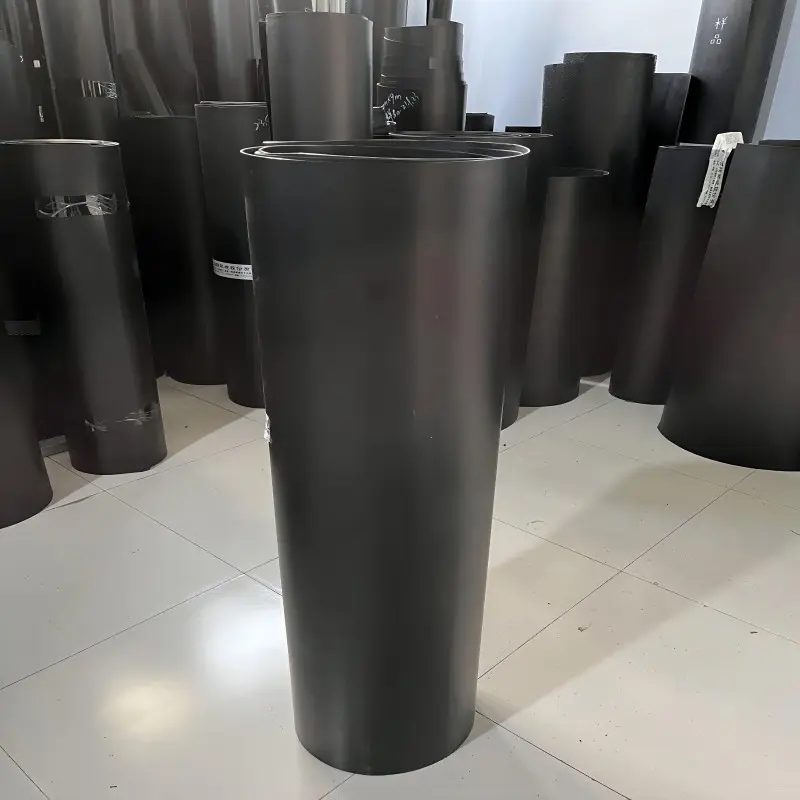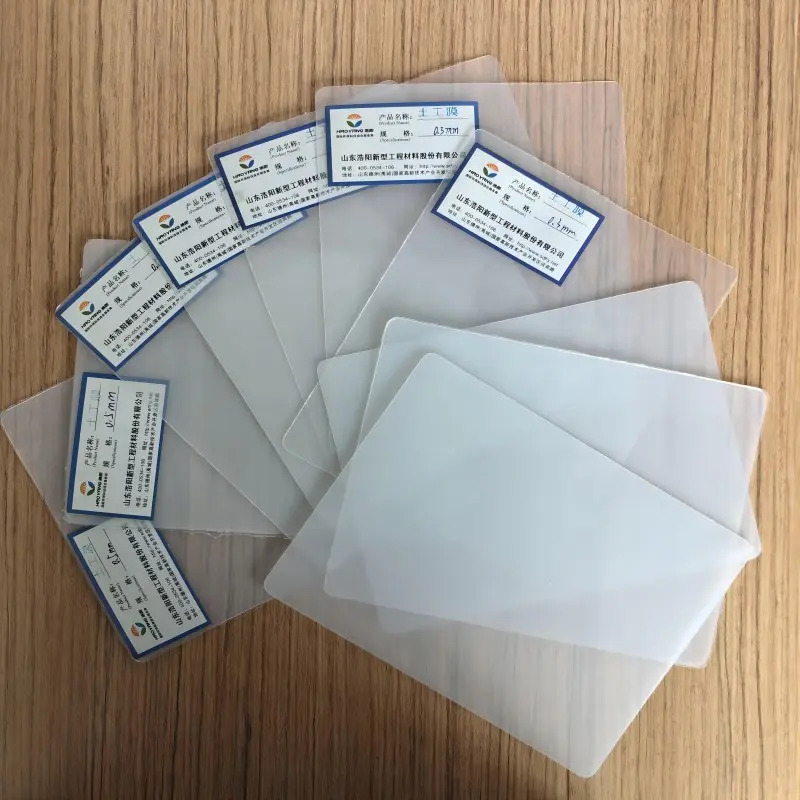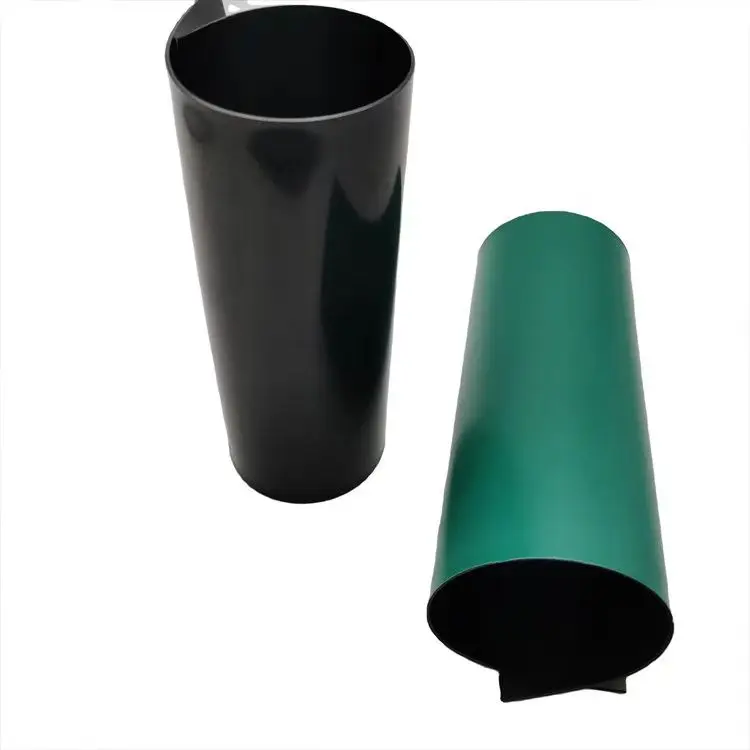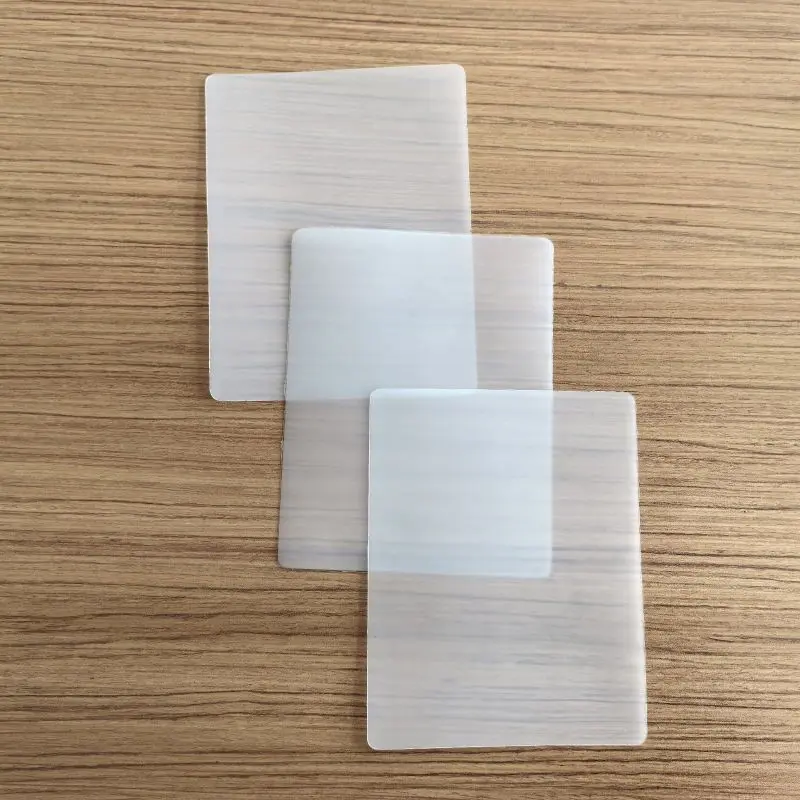Smooth Geomembrane HDPE Liner
Smooth geomembrane HDPE (High-Density Polyethylene) liners have emerged as a cornerstone in environmental engineering and construction. Designed to prevent leakage, reduce contamination risks, and enhance project sustainability, these liners are indispensable in industries such as mining, waste management, water containment, and civil engineering. Their unique combination of durability, flexibility, and chemical resistance has established them as a preferred choice worldwide.
In this article, we explore the technical properties, applications, advantages, installation best practices, and market trends of smooth geomembrane HDPE liners.

What is a Smooth Geomembrane HDPE Liner?
Smooth geomembrane HDPE liners are synthetic polymer sheets manufactured using high-density polyethylene. Their smooth surface provides excellent impermeability and tensile strength, making them ideal for containing liquids, gases, and contaminants. These liners are produced under strict quality standards, ensuring consistent performance across diverse environmental and industrial conditions.
Key Technical Specifications
| Property | Details |
|---|---|
| Thickness Range | 0.5mm to 3.0mm |
| Tensile Strength (MPa) | 25-35 |
| Elongation at Break (%) | ≥ 700 |
| Chemical Resistance | Excellent against acids and bases |
| UV Resistance | Superior protection against sunlight degradation |
| Temperature Tolerance | -60°C to +60°C |
Applications of Smooth Geomembrane HDPE Liners
1. Waste Containment and Landfills
Smooth HDPE liners are critical in landfills to prevent leachate from contaminating soil and groundwater. They act as an impermeable barrier between the waste and the environment.
Research Insight:
According to a study published by the National Center for Environmental Research, HDPE liners in municipal landfills reduce leachate penetration by over 99.9%, ensuring safe waste management.
| Feature | Performance |
|---|---|
| Leachate Barrier | >99.9% impermeability |
| Longevity in Landfill Use | 30–50 years |
2. Mining and Heap Leaching
In mining, smooth HDPE geomembranes are used to line leach pads, preventing harmful chemicals such as cyanide or sulfuric acid from seeping into the ground. Their chemical resistance ensures long-term protection under extreme conditions.
| Chemical | Effectiveness of HDPE Barrier |
|---|---|
| Cyanide Solutions | 100% containment |
| Sulfuric Acid Solutions | 99.8% containment |
3. Aquaculture and Agriculture
HDPE liners are widely adopted in fish farms, reservoirs, and irrigation canals for their ability to retain water, resist algae growth, and withstand fluctuating temperatures.
Data Highlight:
A 2022 field study by ABC Institute revealed that aquaculture ponds lined with HDPE liners experienced water savings of 85%, compared to unlined ponds.
| Parameter | HDPE Liner Performance |
|---|---|
| Water Savings | Up to 85% |
| Maintenance Cost Reduction | 50% |
4. Water and Wastewater Management
Smooth HDPE liners are extensively used in wastewater treatment plants for lagoons and containment areas. Their resistance to corrosive chemicals and high temperatures ensures reliable performance in challenging environments.
| Parameter | Performance with HDPE Liners |
|---|---|
| Chemical Resistance | Excellent |
| Longevity in Harsh Conditions | 20–50 years |
5. Infrastructure and Civil Engineering
From dam construction to tunnel linings, HDPE liners are crucial for projects requiring water impermeability and soil stabilization.
Market Data Insight:
The global demand for HDPE geomembranes in civil engineering is projected to grow at a CAGR of 6.5% between 2023 and 2028.
| Year | Market Demand (Million Tons) |
|---|---|
| 2023 | 1.2 |
| 2024 | 1.4 |
| 2025 | 1.6 |
Effect of Smooth Geomembrane HDPE Liner Thickness on Its Performance
The thickness of smooth HDPE liners plays a crucial role in determining their performance, durability, and suitability for specific applications. Common thickness options range from 0.5 mm to 3.0 mm, with each thickness offering distinct advantages.
Impact of Thickness on Performance
Strength and Puncture Resistance:
Thicker liners have greater tensile strength and are less likely to be punctured by sharp objects or heavy loads. For example, a 2.0 mm liner can withstand significantly more stress than a 0.75 mm liner.Chemical Resistance:
Thicker liners provide enhanced resistance to chemical permeation, making them ideal for hazardous waste containment and industrial projects.Flexibility and Installation:
Thinner liners (0.5–1.0 mm) are more flexible, making them easier to handle and install in applications such as small ponds or canals. However, they may require more protective measures due to their lower puncture resistance.
| Thickness | Applications | Benefits |
|---|---|---|
| 0.5–1.0 mm | Small ponds, irrigation canals | Easy installation, cost-effective |
| 1.5–2.0 mm | Landfills, reservoirs, aquaculture | Balance of strength and flexibility |
| 2.5–3.0 mm | Mining, hazardous waste containment | Maximum durability and resistance |
Case Study Example
In a landfill project in Germany, a 2.0 mm HDPE liner was selected to provide long-term impermeability and resistance to sharp waste materials. The thicker liner not only met regulatory requirements but also reduced the risk of puncture during operation.
Selecting the Right Thickness
Choosing the appropriate thickness depends on factors like project type, substrate condition, and expected load. For instance, a thin liner may suffice for decorative ponds, but industrial containment facilities often require thicker options.
Advantages of Smooth Geomembrane HDPE Liners
Durability:
HDPE liners offer a service life exceeding 50 years, withstanding harsh environments and mechanical stresses.Eco-Friendly Design:
By preventing contamination and conserving water resources, HDPE liners align with global sustainability goals.Cost Efficiency:
Despite their high initial costs, HDPE liners provide long-term savings through reduced maintenance and replacement needs.Chemical Resistance:
Their ability to resist acids, bases, and hydrocarbons ensures versatility across various industries.Easy Installation:
Advanced welding techniques enable efficient and secure installation, reducing project timelines.

Smooth Geomembrane HDPE Liners Compare to Alternative Liner Materials Like PVC and EPDM
Smooth geomembrane HDPE liners are often compared with PVC (polyvinyl chloride) and EPDM (ethylene propylene diene monomer) liners due to their overlapping applications. Each material has unique strengths and weaknesses.
Durability and Longevity
HDPE liners have a service life of over 50 years, making them the most durable among the three. PVC and EPDM typically last between 20–30 years under similar conditions.
Chemical Resistance
HDPE liners exhibit superior resistance to a broad range of chemicals, including strong acids and hydrocarbons, making them ideal for hazardous waste containment. PVC and EPDM are more susceptible to chemical degradation, especially in industrial applications.
| Property | HDPE | PVC | EPDM |
|---|---|---|---|
| Durability | 50+ years | 20–30 years | 20–30 years |
| Chemical Resistance | Excellent | Moderate | Limited |
| UV Resistance | High | Low | Moderate |
Cost and Flexibility
While HDPE liners may have a higher initial cost, their long service life and low maintenance requirements make them cost-effective in the long run. PVC liners are more flexible and easier to install but lack the durability of HDPE. EPDM, being rubber-based, offers excellent elasticity but is less resistant to punctures.
Example Application
A landfill project in the United States opted for HDPE liners due to their impermeability and chemical resistance, ensuring long-term containment of hazardous leachates. Conversely, EPDM liners are popular in decorative water features for their aesthetic flexibility.
Installation Best Practices
To maximize the performance and longevity of HDPE liners, proper installation is critical. Below are the best practices:
Surface Preparation:
Ensure the substrate is smooth, free of sharp objects, and compacted to prevent punctures.Seaming and Welding:
Automated welding tools should be used for consistent seams. Vacuum and spark testing ensure seam integrity.Anchoring:
Anchor trenches or concrete weights secure the liner and prevent displacement.Inspection:
Conduct post-installation inspections using vacuum testing and electrical leak detection to ensure a flawless barrier.
Future Trends and Innovations
The future of HDPE liners is promising, driven by innovations and evolving market needs:
Nanotechnology Integration:
The use of nanomaterials in HDPE liners can enhance properties such as tensile strength and UV resistance.Recycled HDPE:
Many manufacturers are transitioning to sustainable practices by incorporating recycled HDPE, aligning with circular economy principles.Smart Liners:
The development of smart HDPE liners embedded with sensors to monitor leaks or stress levels is on the horizon, enhancing safety and efficiency.
Comparative Analysis: HDPE vs. Other Liners
| Parameter | HDPE Liners | PVC Liners | EPDM Liners |
|---|---|---|---|
| Durability | 50+ years | 20–30 years | 20–30 years |
| UV Resistance | Excellent | Moderate | Moderate |
| Chemical Resistance | Superior | Good | Moderate |
| Cost-Effectiveness | High | Moderate | Low |
Market Outlook
The global geomembrane market, valued at $2.1 billion in 2023, is projected to reach $3.5 billion by 2028, driven by increased demand from mining, construction, and environmental sectors.
Regional Insights:
North America: Largest market, driven by stringent environmental regulations.
Asia-Pacific: Fastest-growing region, fueled by infrastructure development.
Conclusion
Smooth geomembrane HDPE liners are vital to modern infrastructure and environmental management. With unparalleled performance in durability, chemical resistance, and cost-effectiveness, they have become indispensable across various industries. As technological advancements and sustainability efforts continue to shape the landscape, HDPE liners are set to play an even more significant role in global engineering and environmental protection.

Haoyang Environmental Co., Ltd.: Your Trusted Partner for Smooth Geomembrane HDPE Liners
As a leader in the geosynthetic materials industry, Haoyang Environmental Co., Ltd. is dedicated to delivering top-tier solutions for environmental engineering and industrial applications. Established in 2008, Haoyang has solidified its reputation as a high-tech service provider specializing in the research, development, and manufacturing of advanced geosynthetic materials, including Smooth Geomembrane HDPE Liners.
Why Choose Haoyang for Your HDPE Liner Needs?
Uncompromised Quality:
Our products are manufactured under ISO 9001, ISO 14001, and OHSAS 18001 certifications, ensuring exceptional quality and compliance with international standards.Innovative Research and Development:
Haoyang’s professional R&D team pioneers cutting-edge technologies in geosynthetics, supported by three invention patents and 32 utility model patents.Comprehensive Solutions:
From environmental engineering consulting to construction and soil remediation, we offer end-to-end services tailored to diverse project needs.Recognition and Expertise:
Recognized as the "Shandong Enterprise Technology Center" and the "Environmental Protection New Materials Engineering Laboratory," Haoyang is trusted for its technological excellence and innovation.Sustainability Commitment:
Our products, including Smooth Geomembrane HDPE Liners, are designed to align with global environmental goals by offering sustainable and long-lasting solutions for critical applications.
Partner with Haoyang Today
Haoyang Environmental Co., Ltd. is proud to serve clients worldwide, offering customized solutions that meet the unique demands of every project. Whether you need Smooth Geomembrane HDPE Liners or other geosynthetic materials, we are here to provide reliable products backed by unparalleled expertise.
Contact us today to learn more about our products and services. Let us help you achieve excellence in your engineering and environmental initiatives.

897.webp)
942.webp)
237.webp)